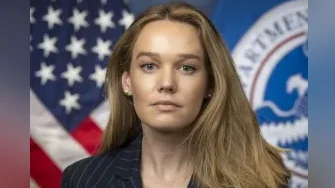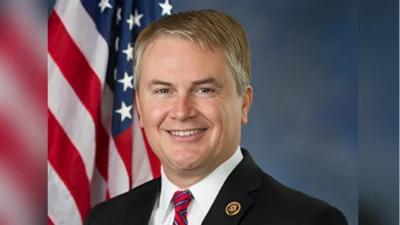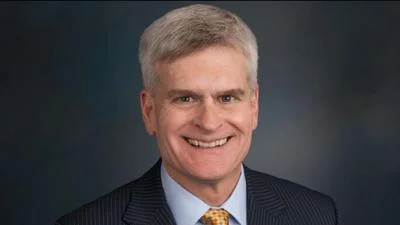Dear Mr. Scully:
We are writing with regard to a proposal by the Centers for Medicare and Medicaid Services
(CMS) to change the way that nursing home inspectors cite the scope and severity of violations of federal nursing home standards. The proposal would make changes to the State Operations Manual,
which provides guidelines for state nursing home inspectors, and was made available to the public for comments in September 2001.
This proposal will relax federal nursing home standards, contradicting your previous public commitments to strengthen these standards. Two months ago, White House spokesman Ari Fleischer said that there were no plans to weaken nursing home inspection: “We're going to beef up and strengthen nursing home regulations. We're working to strengthen accountability." (1) Similarly, you said: “We are pursuing initiatives to strengthen accountability and improve monitoring of nursing homes." (2) The latest proposal conflicts with those promises to the public, and we are urging that it not be implemented.
As you know, when inspectors identify a problem in a nursing home, they cite the home for a violation. In these citations, inspectors denote the seriousness of the violation by providing an indication of the severity (the level of health risk posed by a violation) and the scope (the number of residents affected). There are three levels used to identify the scope of a violation: “isolated,"
“pattern," and “widespread." As we understand it, the CMS proposal would change the regulations to allow inspectors to cite violations as “widespread" only if they are able to document that 75% or more of a facility’s residents are affected by the problem.
The fundamental problem with your proposal is that it does not reflect how inspectors investigate nursing homes. As you know, significant parts of all federal and state inspections of nursing homes are based on reviews of the medical records of, and interviews with, a representative sample of nursing home residents. These representative samples are chosen because it would be too time-consuming and costly to interview and review the records of every nursing home resident. Your proposal, however, would not allow inspectors to cite incidences of widespread harm for any violation that is identified based on representative samples. The proposal states that “[s]ince the sample is never seventy-five percent or more of the facility’s residents, these deficiencies can never reach widespread scope, even if every resident in the sample were affected." (3)
If your proposal is finalized, thousands of nursing homes with serious violations could receive lesser citations. The minority staff of the Government Reform Committee analyzed the most recent annual inspection reports for all Medicare- or Medicaid-certified nursing homes and the records of all nursing home complaint investigations from January 2000 through November 2001. During these inspections and investigations, nursing homes were cited for over 6,800 widespread harm violations that caused more than minimal harm to residents. In almost 300 of these cases, nursing homes were cited for widespread harm violations that caused death or serious injury to residents, or had the potential to do so. The 6,800 widespread harm violations included over 350 violations for resident abuse, untreated pressure sores, improper use of restraints, and preventable accidents. Under your proposal, many of these violations would be cited at a lower scope level.
Examples of widespread violations that would not be cited as such under your proposal include the following:
• A case in a Texas nursing home, where inspectors cited a widespread violation after finding that 16 out of 16 sampled residents were improperly physically restrained. Inspectors found that the facility had not attempted less restrictive alternatives before restraining residents and had not demonstrated the medical necessity for the restraints. As a result, several of the sampled residents were “declining in their activities of daily living, i.e. ambulatory abilities,
hygiene, eating, transferring." Under the proposed CMS policy, this violation would not be considered widespread because the inspectors had not assessed 75% of the 97 residents in the facility. (4)
• A case where a facility in Texas was cited for a widespread violation after inspectors found that the facility “failed to provide incontinent care, oral hygiene, grooming, assistance with meals, and appropriate positioning for 27 of 49 sampled residents." Residents were observed with strong urine and feces odors, dried feces on their pressure sores, urine saturated clothing,
and sores on their buttocks, tailbones, and heels. Under the proposed CMS policy, this violation would not be considered widespread because the inspectors had not assessed 75%
of the 194 residents in the facility. (5)
• A case where Pennsylvania inspectors cited a nursing home for a widespread violation relating to physical abuse after interviewing residents, families, and staff, and reviewing the facility’s records. The inspection report detailed suspicious injuries to six residents, including: a resident with “large purple bruises over both temples and a bruised upper lip"; a resident with
“six unidentified bruises on the front and back of her body"; a resident with a “bruised and swollen" knee; and a resident with a “10-inch skin tear of unknown origin to her left forearm." The facility’s records also contained letters from residents complaining of mistreatment and stating that “they felt like prisoners [and] were actually afraid to ask for anything." Under the proposed CMS policy, this violation would not be considered widespread because it is not clear that the inspectors had assessed 75% of the 94 residents in the facility. (6)
The CMS proposal contradicts the findings of the U.S. General Accounting Office (GAO),
which has concluded that the inspection process needs to be made more stringent, more detailed, and more consistent. GAO has also recommended that the Department of Health and Human Services
(HHS) impose sanctions more promptly on nursing homes with repeated serious violations and strengthen federal oversight of the way in which resident complaints are investigated.
Moreover, the CMS proposal will confuse and potentially mislead residents and family members seeking to learn about nursing homes, particularly those who use the HHS “Nursing Home Compare" website. The CMS proposal adopts a definition of “widespread" that is at odds with the common understanding of the word. According to the American Heritage College Dictionary,
“widespread" means “[s]pread or scattered over a considerable extent." But under the proposal, a violation that involves two-thirds of residents in a nursing home - or for that matter, 74% of the residents - is not a “wid espread" harm.
The semantical change you seek brings an Orwellian result. By lumping all violations affecting between four residents and 74% of residents in the same category, the CMS proposal lessens the usefulness of these classifications and limits public information about nursing home conditions. Your change will mean the appearance of widespread violations will reduce appreciably, yet the inexcusable reality of widespread harm will remain the same.
It is wrong for CMS to adopt a policy making it significantly harder, if not impossible, to accurately cite the proper scope of these violations and to accurately inform the public about these serious problems. We urge you to reconsider the proposal to weaken nursing home inspections.
Sincerely,
Henry A. Waxman
Ranking Minority Member
House Committee on Government Reform
Charles E. Grassley Ranking Minority Member Senate Finance Committee
----------------------------------------------------------------------
(1) “Bush Swiftly Denounces Nursing Home Plan," New York Times (Sept. 8, 2001)
(2) Id.
(3) CMS, Draft Changes to the State Operations Manual, 6 (Sept. 21, 2001)
(4) Form 2567 for Nursing Home in Longview, TX (Dec. 16, 1999) (L-level violation).
(5) Form 2567 for Nursing Home in Tyler, TX (Dec. 23, 1999) (L-level violation).
(6) Form 2567 for Nursing Home in Norristown, PA (Nov. 2, 1999) (L-level violation)








